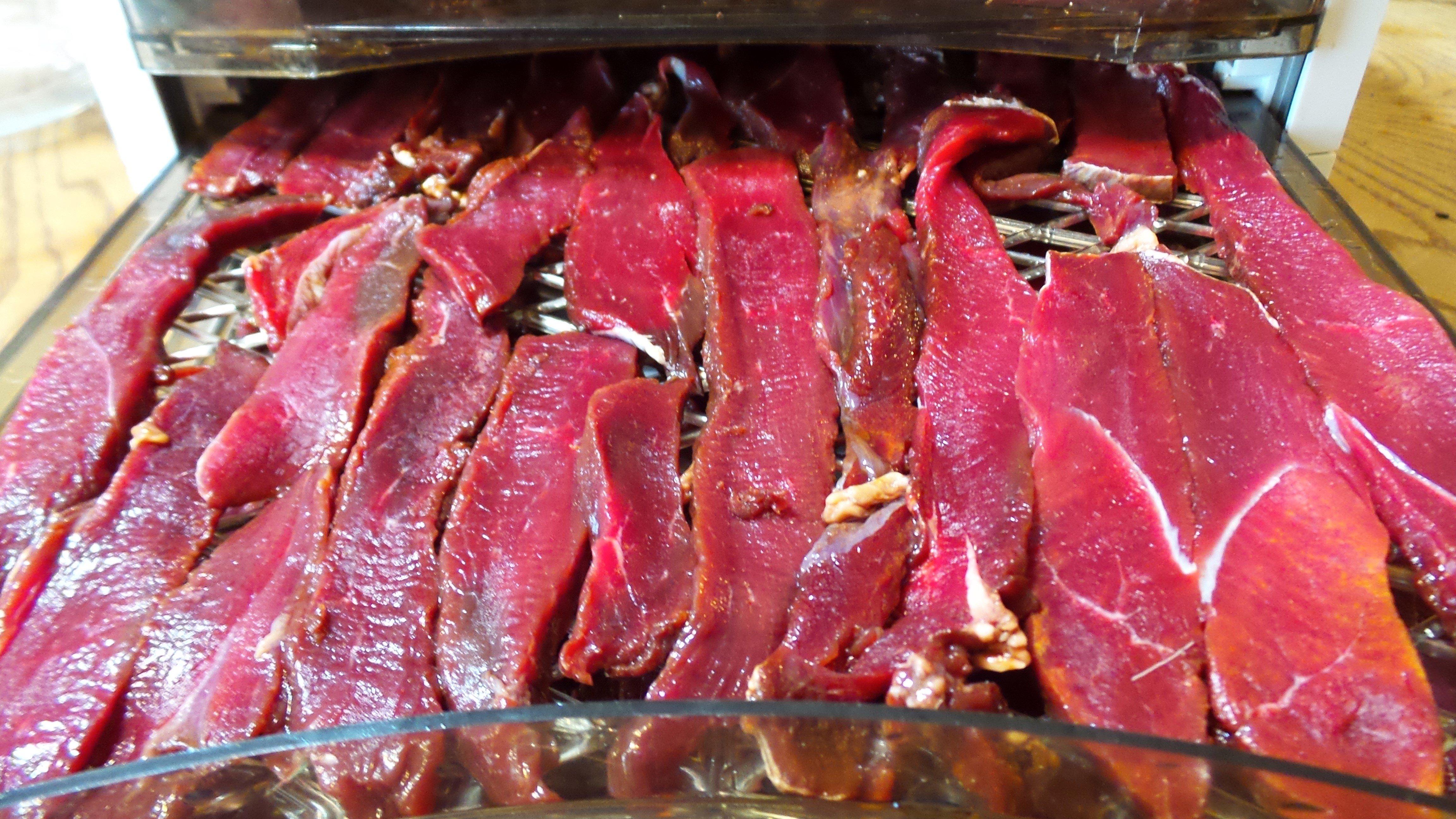Basic Venison Jerky
Basic Venison Jerky
60 Min
Prep Time
420 Min
Cook Time
5-10
Servings
Medium
Difficulty
Everyone needs a good go-to recipe for venison jerky, and this one fits the bill. Make it for deer camp, duck camp, or just snacks around the house. We try to always keep some around.
Adding Instacure #1 to the jerky marinade is optional, but, for me at least, the peace of mind that comes from not having to worry about botulism more than outweighs any concerns over the nitrites in the cure. In fact, you get more nitrites from a serving of green leafy vegetables than you do from properly cured meat. Instacure #1, also called Prague Powder or pink salt (not to be confused with Himalayan salt, which contains no nitrites) can be found in most butcher shops or large sporting goods outlets. Use it at a rate of one level teaspoon to five pounds of meat.
Ingredients
5 pounds well-trimmed venison
1 cup Worcestershire sauce
1 cup Allegro brand wild game marinade
1/2 cup soy sauce
1/2 cup brown sugar
2 Tablespoons freshly ground black pepper
2 teaspoons onion powder
2 teaspoons red pepper flakes (optional)
1 level teaspoon Instacure #1
Cooking Instructions
Start by trimming as much fat, connective tissue and silver skin from your venison as possible. Slice the meat, with the grain, into long strips about a quarter of an inch thick. This is where the jerky cutter earns it place, a few cranks of the handle turn a large cut into a pile of evenly cut strips.
Mix the marinade ingredients in a large glass bowl. Mix well to dissolve the brown sugar completely.
You can marinade the meat either before or after cutting it into slices. If you choose to marinate the large cuts whole, give them two or three days sealed in a zip style or vacuum seal storage bag. If you slice the meat before marinating, overnight is normally sufficient.
An alternative method to a dehydrator is to suspend from toothpicks on the top rack of your oven or smoker. If you go the oven route, place cookie sheets beneath the hanging jerky to cut down on mess and smoke in the oven and the possibility that you might never be allowed into the kitchen again. Set the oven at its lowest temperature and prop the door open slightly with the handle of a wooden spoon. A small fan pointed into the open crack of the oven door speeds the drying process.
Times vary according to oven or smoker temperature and air flow, but start checking the jerky after four hours. Pull the jerky when it is dry to the touch, but before it becomes brittle.
Store jerky in sealed Mason jars or zip style bags in the refrigerator for up to two or three weeks. For longer term storage, vacuum seal the jerky and stash it in the deep freeze.









